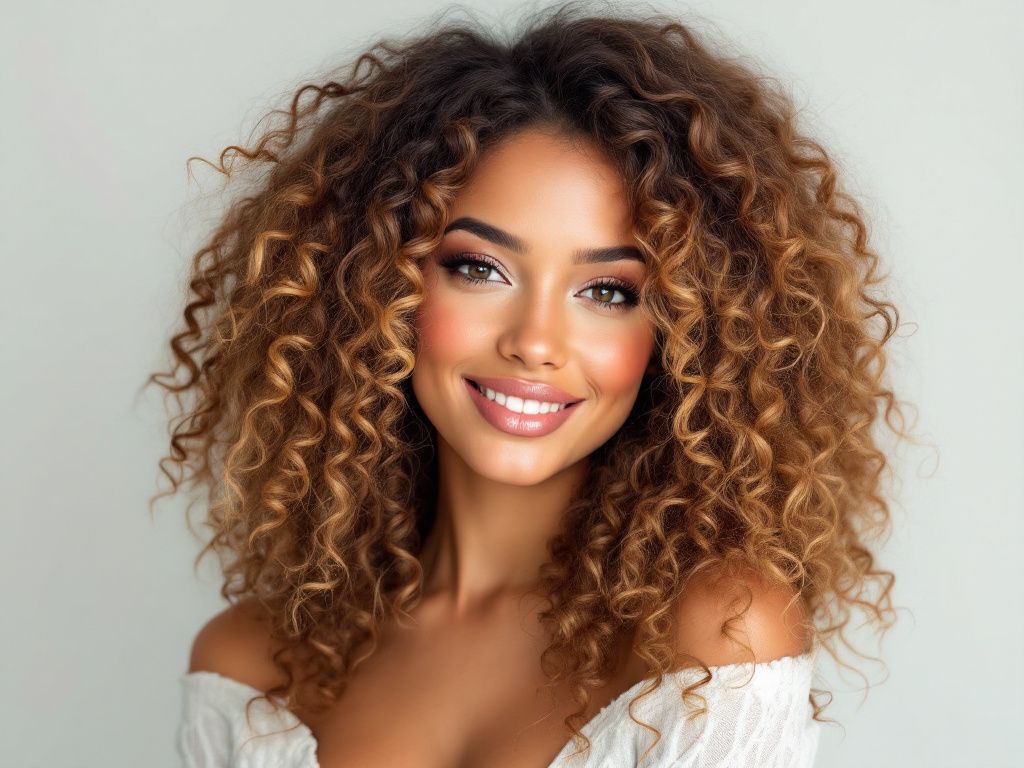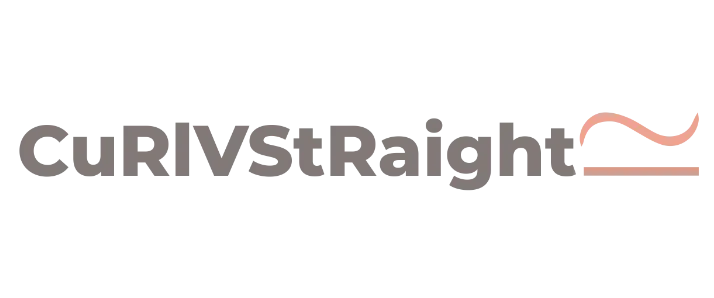
Welcome, curly-haired connoisseurs and texture enthusiasts! Whether you’re a seasoned curl aficionado or just beginning to explore your unique hair type, understanding the myriad types of curly hair is essential to embracing and enhancing your natural beauty. From corkscrew curls to soft waves, each texture carries its own allure and set of challenges. Our guide delves deep into the colorful kaleidoscope of curls with a celebrity-infused list that blends a treasure trove of information with real-world applications for maintaining your crown flawlessly.
Understanding the Hair Type Chart 🗂️
Before we dive into the stunning array of curl types slaying the scene, let’s quickly establish how curly hair types are categorized. Knowing your hair type isn’t just about aesthetics; it’s your ticket to choosing the perfect products and regimes tailored correctively for you.
The hair type chart, widely used as a guide, classifies curls on a spectrum of types:
- Type 1 is straight hair.
- Type 2 includes wavy textures (2A, 2B, 2C).
- Type 3 covers classic curls (3A, 3B, 3C).
- Type 4 encompasses coily textures (4A, 4B, 4C).
With that framework set, let’s dive into the 10 hair types coiling across runways, screens, and Instagram feeds, accompanied by celebrity inspiration and must-know insights!
1. 2A – Subtle Waves 🌊
**Natural Vibes with Michelle Williams**
Starting off with the gentle, understated waves of Type 2A, this loose curl pattern creates a subtle, beachy look perfect for breezy style. Usually fine and easy to straighten, these waves require minimal product to maintain their lustre.
**Expert Tip:** Embrace your carefree vibe with a lightweight mousse to enhance waves without weighing them down. Skip heavy creams, which can lead to flat, lifeless hair.
**Common Mistake:** Avoid excessive heat styling to preserve this delicate curl pattern. Air dry when possible.
2. 2B – Tousled Texture 🎢

**Channeled by: Olivia Munn**
Type 2B waves resemble a beautiful roller coaster ride with more definition. Olivia Munn showcases how tantalizing these waves can look with a bit more body and an inclination to frizz.
**Practical Example:** Hit the waves with sea salt sprays; they are your best friend. They add stunning layout and encourage volume naturally.
**Do This, Not That:** Use a diffusing attachment on your dryer for added volume. Don’t brush your hair while dry—it disrupts the natural wave.
3. 2C – Thick and Voluminous 🌪️
**Roll it Out like Lorde**
Type 2C offers the thickest form of waves, teetering on curly terrain. Think voluminous texture with a compelling presence, akin to Lorde’s awe-inspiring tresses.
**Actionable Advice:** Lock in those waves with a good leave-in conditioner to manage frizz. These waves often require a bit more moisture.
**Real-World Scenario:** Humidity can cause 2C hair to spiral into curls—taming it with anti-humidity serums is essential.
4. 3A – Loose Curls 🎠
**Captured beautifully by: Zendaya**
Emerging from waves, Type 3A presents clear, S-shaped curls that mirror the cascading beauty of Zendaya’s hair. Less prone to frizz yet full of bounce, these curls scream glamour.
**Best Practice:** Amplify definition with an alcohol-free styling gel that won’t dry out those fabulous locks.
**Common Mistake:** Over-washing strips curls of necessary oils—limit wash days and focus on co-washing for moisture retention.
5. 3B – Sassy Spirals ⚡
**Personified by: Yara Shahidi**
Type 3B curls define the term ‘spirited’ with their spring-loaded curls and dense look. Yara Shahidi beautifully harnesses these lively curls with enviable volume and shape.

**Expert Advice:** To keep the curls happy, treat them with hydrating masks. This locks in moisture, an essential asset for texture resilience.
**Do This, Not That:** Choose satin pillowcases over cotton—minimize friction and breakage while you snooze.
6. 3C – Tight Curls 🌰
**The Essence of Confidence: Tracee Ellis Ross**
Advanced from 3B, Type 3C boasts tighter springs akin to corkscrews, donned by Tracee Ellis Ross with style and sass. This curl type is characterized by a loose corkscrew shape.
**Useful Tip:** Combine curl creams and defining gels for an elevated, frizz-free appearance.
**Real-World Scenario:** Dryness can be an issue; employ a LOC (Liquid-Oil-Cream) method for enhancing nourishment and definition.
7. 4A – Dense Coils 💫
**Iconized by: Solange Knowles**
Transitioning to coils, Type 4A’s dense curls manifest a soft, springy coil pattern that wears beautifully natural or styled up.
**Practical Rigidbody:** Coils love definition—styling milk creates perfect slip and moisturizing effects.
**Common Mistake:** Avoid heavy silicones that can cause buildup. Look to water-based products for hydration and easy management.
8. 4B – Z-Patterned Beauty 💥
**Powerful Pattern like Erykah Badu**
Type 4B spirals lean toward a zig-zag shape, resulting in voluminous and attractive structures. Erykah Badu showcases resilience and artistic prowess through her well-cherished locks.

**What to Do:** Detangle with conditioners that provide slip and minimize manipulation.
**Expert Tip:** Want length without the squeeze? Use stretched hairstyles like twist-outs for a beautiful display of this dense pattern.
9. 4C – Fierce Coils 🔥
**Inspired by: Viola Davis**
The ultra-textured Type 4C is tightly coiled. Viola Davis unapologetically exemplifies how these complex coils hold their ground beautifully with no definite curl pattern. Shrinkage is high, but versatility is boundless.
**Pro Advice:** Embrace protective styles like braids and bantu knots to ensure health and growth retention.
**Do This, Not That:** Never skimp on deep conditioning, reserved especially for imbibing critical softness and manageability.
10. Mixed Texture Mastery 🎭
Classic examples include celebrities like Halle Berry, whose masterpiece curls comprise different strands from 2A to 3B, intricately woven into an enviable tapestry of mixed legend.
**Real-World Application:** Guillotine when and where certain strands may call for unique product combinations; enhancing curls with design-specific solutions yields brilliant weaving.
**Visual Insight:** Layering helps in understanding—layer twist-outs over blowouts to recognize possibilities.
—
Final Words: Celebrating Your Curly Hair Pattern
Navigating the curly hair type chart can feel akin to traversing diverse lands; unpredictable at times but laden with beauty and opportunity. Embracing and knowing your specific pattern positions you towards unlocking bespoke styles and professional hair miracles, armed with products and methods that synchronously elevate and maintain your essence.
In putting forth these inspiring celebs, we’ve opened a spectrum of exciting potential influences ever within reach, fueling individual curly creations deserving spotlight and reverence.
Now, fellow curly queens, adorn your confident crown with unapologetic flair. May each curl, wave, and coil fetch bold expression and elevated esteem. Share, repeat, and return to this trove whenever you find your curls veering or seeking encouragement.
For curly struggles or discoveries, we’re your fortified arsenal of inspiration—contributing steadfast insights to support your curlicious pursuit wonderfully. Cheers to your unparalleled curl journey ahead! 🍾
Frequently Asked Questions
What are the benefits of using a hair mask in my hair care routine?
Using a hair mask can provide several benefits, including hydration, smoothing, strengthening, curl definition, heat protection, and damage repair. Hair masks infuse the hair with moisture, help coat the hair shaft to seal split ends, reduce breakage, and protect the hair from heat styling and environmental damage[1][4].
What ingredients should I look for in a hair mask?
Effective hair masks often include ingredients such as coconut oil, argan oil, shea butter, honey, avocado oil, green tea, and coconut water. These ingredients provide nourishment, moisturize, and protect the hair, offering benefits like softening, moisturizing, and protecting against damage[2][5].
How often should I use a hair mask in my routine?
You should use a hair mask whenever your hair feels dry, unmanageable, or in need of intense hydration. This can vary depending on your hair type and needs, but generally, using a hair mask once or twice a week can help maintain healthy and moisturized hair[1][4].
How do I apply a hair mask for the best results?
To apply a hair mask effectively, shampoo your hair first, then apply the mask, focusing especially on the ends where hair tends to be the most damaged. Leave the mask on for anywhere from 10 minutes to overnight, depending on the type of mask and your hair’s needs[1][4].
References



Leave a Reply